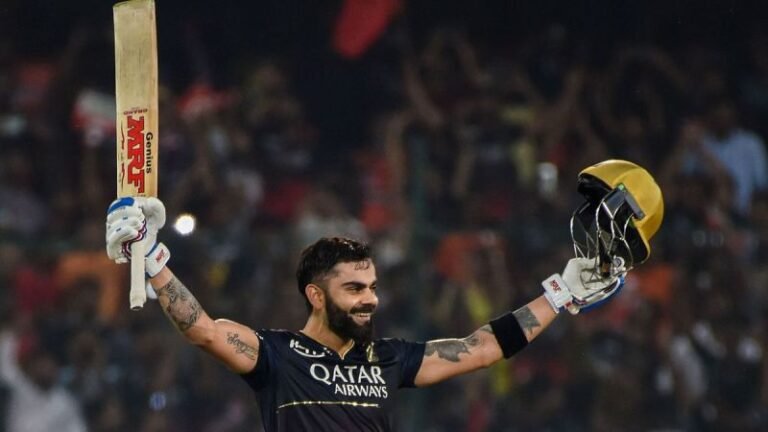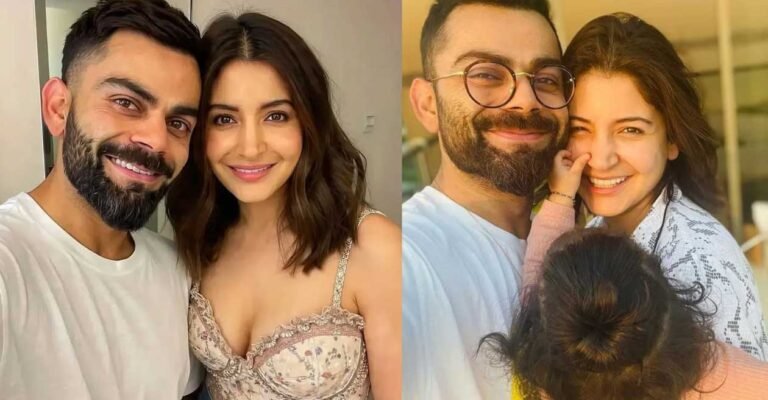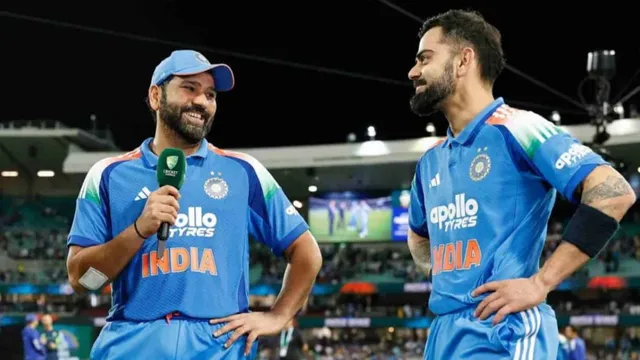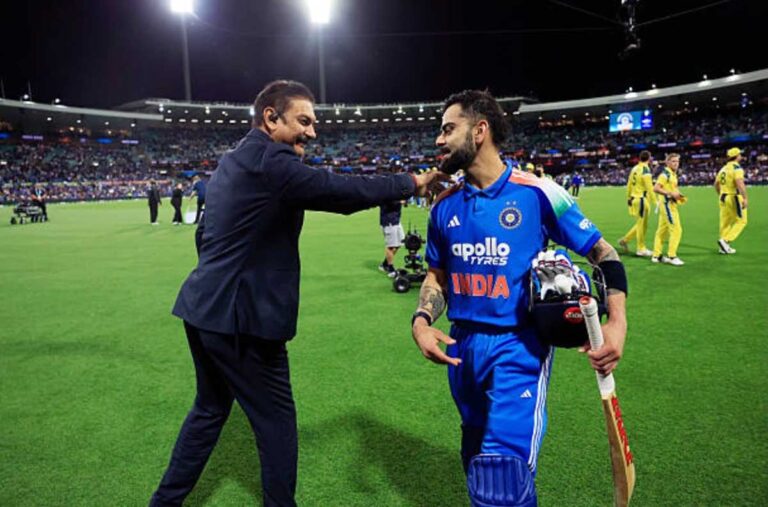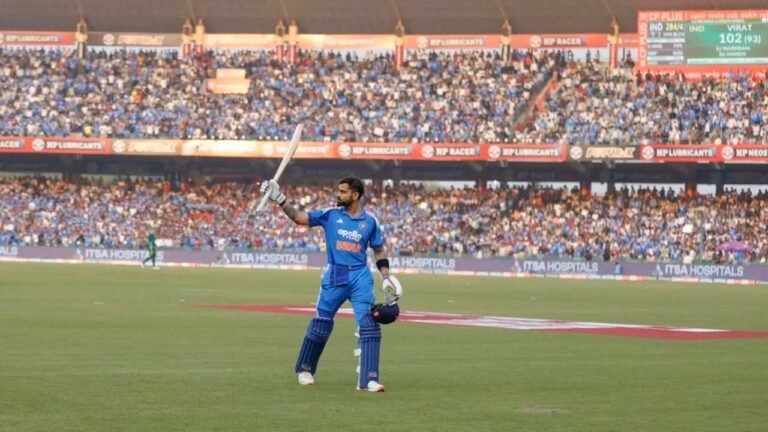Virat Kohli and Rohit Sharma have been the strongest pillars of the Indian batting order across formats. They have served the nation for more than a decade. Recently these two legends announced their retirement from test cricket, which left fans in shock. These two stalwarts of top Indian batting have smashed more than 13,000 runs in test cricket in 190 matches they have played together. It reflects their dominance and importance in the team. However, after their retirement, Shubhman Gill has been appointed as the new Test Captain of India along with Rishabh Pant as the Vice Captain for the England Tour.
Both young players have earned respect through their performances, and they have the potential to take the baton forward. But, it will be interesting to see how the Indian team will fill the massive void after Kohli and Rohit.
How India Replaces Kohli & Sharma in Test Cricket
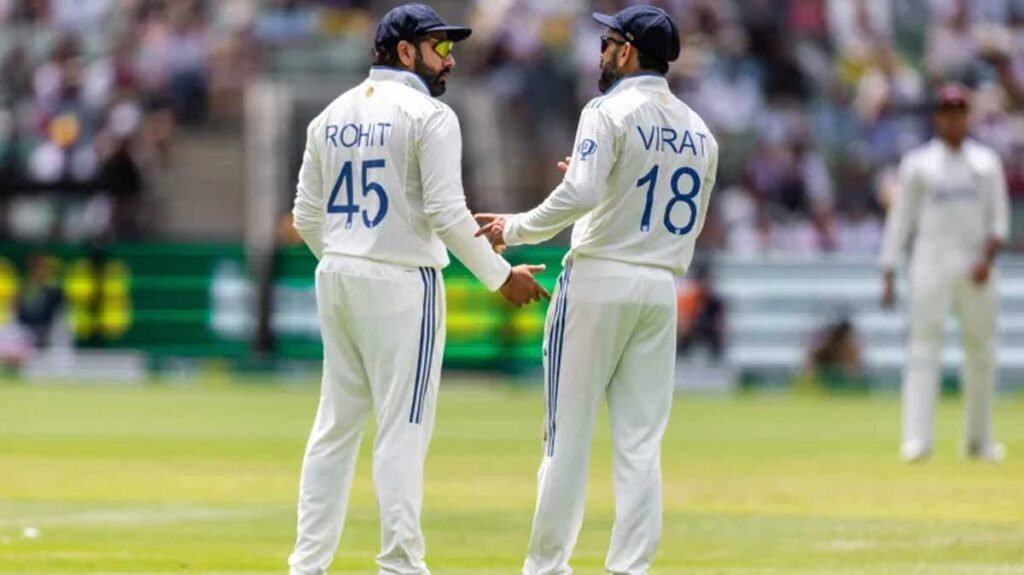
Rohit Sharma played as an opener in the test and Kohli played at number four. These are two most important and challenging positions to play at, especially considering the format. Their unavailability will definitely pinch the management as well as the squad. But, the team has to move on and young players need to take the responsibility.
A decade ago, when Sachin Tendulkar was playing, he was the center stage of Indian batting. Playing at number four, he not only scored massive runs but also provided stability to the batting order. Later, Kohli took this responsibility after Tendulkar’s retirement. Now, Gill has replaced Kohli at this position and KL Rahul is opening the innings with Yashasvi Jaiswal.
This is certainly a transitional phase. Hopefully, the new-age cricketers will take inspiration from these legends and try to serve the nation as Rohit and Virat have done. Let us look at the contributions these generational players have done to Indian team in test cricket:
Virat Kohli in Test Cricket
Virat Kohli redefined India’s batting template in Test cricket with his intensity, hunger, and discipline. From his debut in 2011 to his retirement in 2025, he carried the legacy of Indian cricket forward with remarkable consistency. Kohli was more than just a run-scorer—he brought attitude and belief to the team. His aggressive captaincy style, fitness standards, and ability to play in tough overseas conditions made him a complete modern-day Test cricketer. Whether it was the century at Perth, dominance in England, or leadership in Australia, Kohli’s contribution was as impactful as it was inspirational.
Here’s a quick look at his Test stats:
| Matches | Innings | Runs | Average | 100s | 50s | Best Score | Captaincy Tenure |
| 123 | 210 | 9,230 | 46.85 | 30 | 31 | 254* | 2014–2022 |
Rohit Sharma in Test Cricket
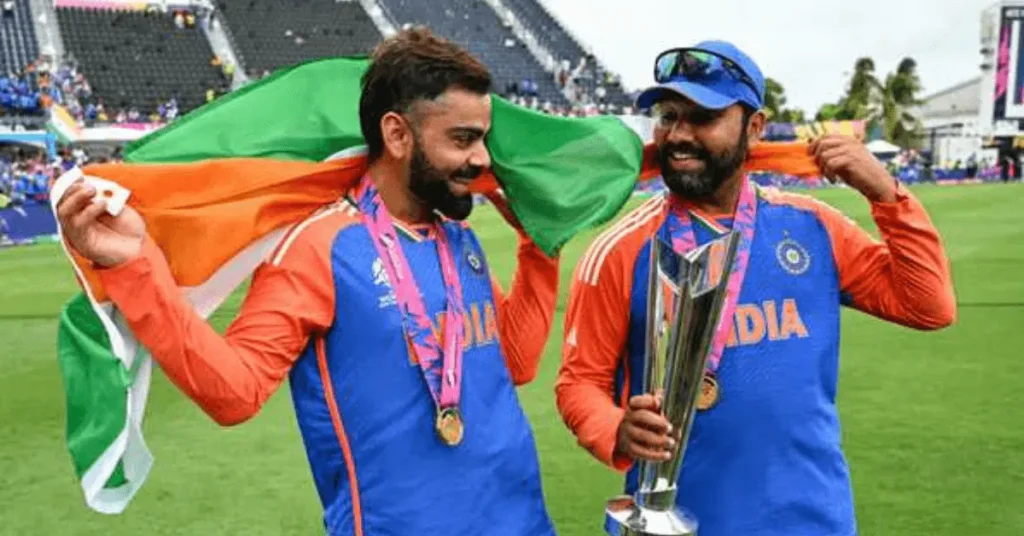
Sharma debuted in a blockbuster style where he smashed a daddy hundred on 6th Nov 2013. Rohit scored 177 against West Indies at Eden Gardens, Kolkata. Before him, there was only Virendar Sehwag who could dare to smash the first ball for boundary. Rohit Sharma brought a new flavour to Indian batting. With elegance, temperament, aggressive batting, and hunger to score big made him a shining star. Later he also became the skipper and led India through several successful campaigns. Here is a glimpse of Rohit Sharma’s contribution as a batsman:
| Matches | Innings | Runs | Average | 100s | 50s | Best Score | Captaincy Tenure |
| 67 | 116 | 4,301 | 40.57 | 12 | 18 | 212 | 2022–2024 |
History: India in Tests Without Kohli & Rohit
Over the years, there have been brief phases when either Kohli or Rohit—or sometimes both—missed Test matches. These moments gave a glimpse into how India coped without their two modern giants. While replacements occasionally rose to the occasion, the void in experience and match-winning ability was always evident. Let’s revisit those instances:
Timeline of India in Tests Without Kohli & Rohit:
- 2014 (Kohli rested vs Bangladesh)
Kohli was rested, and the team leaned on Cheteshwar Pujara and Ajinkya Rahane for stability. India won the series but lacked attacking flair in the middle order. Although Kohli was new to the test squad, his absence made fans understand how important he is going to be in future. - 2017 (Rohit sidelined with injury in Sri Lanka series)
KL Rahul stepped in as opener. India dominated the series, but the opening stand lacked Rohit’s intent and fluency. - 2018 (Rohit dropped from overseas Tests in England)
India struggled with opening partnerships. Frequent changes made the top order fragile, exposing the middle too early. It was a challenge for the Indian team in an home-away series against lethal English bowling. The team as well as fans missed Rohit’s aggression and stability in the squad. - 2021 (Kohli missed 2nd Test vs South Africa)
KL Rahul led the side, but India lost the match. Kohli’s absence was felt in leadership and the batting core. - 2022 (Rohit missed England Test, Kohli out of form)
Bumrah led in Rohit’s absence. The team lost the Test despite a strong start. Kohli’s prolonged dip and Rohit’s unavailability tilted momentum.
Related Read: RCB Owner: Who is the owner of RCB in IPL 2025?
Key Challenges For New Batting Line‑up
Replacing two icons like Virat Kohli and Rohit Sharma is a massive task, technically and mentally. The new-generation batters are talented, but stepping into shoes worn for over a decade comes with pressure. The transition brings fresh energy, but also uncertainty that the team must address head-on.
Here are the major challenges the new batting line-up will face:
- Pressure Absorption
Kohli and Rohit were go-to batters in tense situations. The young line-up must now learn to anchor innings under pressure, especially in away Tests. - Settling the Opening Pair
Rohit brought much-needed calm at the top. Without him, finding a stable, consistent pair becomes crucial. - Consistency at No. 4
Kohli owned the No. 4 spot. Shubman Gill now takes over, but maintaining form across conditions will be key. - Leadership Vacuum in Batting Group
Beyond their runs, Rohit and Kohli offered leadership on and off the field—something this new core must develop over time. - Overseas Test Challenges
Many young batters are untested in tough overseas conditions. Success there will define their credibility in red-ball cricket.
Potential Replacements at Number Four
This is one of the most crucial positions to bat at in test cricket. The batter has to provide stability, soak the pressure, prepare a platform for the middle order, and score runs. Some greatest cricketers have served their respective nations playing at this number. Jacques Kallis, Mahela Jayawardane, Brian Lara, Sachin Tendulkar, and Virat Kohli have broken records playing at number four in test cricket.
Virat Kohli has cemented this position since his debut. After his retirement, the biggest question was- “who will replace Kohli.” For the ongoing test series between India and England, Shubhman Gill has been appointed as captain as well as he is batting at number four. There is no doubt that he is a talented batter and has all the potential to become a great cricketer. But, his abilities are yet to be checked in tough conditions.
Besides him, there are several other batters that might get a chance at this position. Let us have a quick analysis about this:
Shreyas Iyyer
In white ball cricket, Iyyer has performed fantastically at number four. He did an excellent job in 50-over and T20 World Cups consecutively. Considering this, he can be a good choice for this position. However, it will be too early to call him a replacement for Kohli. His future performances and improvement as a batter will give a clearer picture.
Karun Nair
Karun’s career has been a roller coaster ride. He got dropped after scoring a triple century. After that, he could not get many chances. At the same time, his performances were not good enough to cement his position in the Indian team. Now, he is playing a comeback series against England, playing at number three. His technique, temperament, and ability to score daddy hundreds make him a strong contender for number four position.
Sai Sudarshan
Sai Sudarshan emerged as one of the most appreciated cricketers in the last two IPL seasons. The best part is that he was the highest run scorer this season by playing proper textbook shots, which reflects how technically sound he is. Consequently, he was selected in the Indian test team. It is again too early to predict something, but his style of batting is quite similar to Virat Kohli. Probably in future, he can take that responsibility too.
Also Read: How Virat Kohli Contributed to RCB’s IPL 2025 Title Win
Openers to Anchor the Top Order
After Rohit Sharma debuted in test cricket in 2013, he started opening the innings. He smashed his maiden test century in the very first match. Initially, his partner was Shikhar Dhawan or sometimes KL Rahul. In recent years, he opened innings with Yashasvi Jaiswal also.
After his retirement, it has become a huge responsibility for the generation bold to keep the flame alive. A few batters have shown great potential in the recent past that can create the magic Rohit did.
Shubhman Gill
Although he is playing at number four in the ongoing series with England, Gill has also opened innings with Sharma on multiple occasions. After all, Shubhman is a proper opening batsman in ODIs. It will be interesting to see in future how he manages the team as a captain. If he gets another batter at number 4, his position as an opener is almost certain.
Captaincy & Leadership Transition
The retirement of Rohit Sharma and Virat Kohli has not only created a vacuum in batting but also in leadership. Both had distinct captaincy styles—Rohit, calm and composed; Kohli, aggressive and intense. Together, they led India through some of its most memorable Test wins, especially overseas. Their departure marks the beginning of a fresh leadership chapter in Indian cricket.
Shubman Gill’s role and pressure
Shubman Gill, the newly appointed Test captain, brings youthful energy and a modern mindset to the role. At just 25, he is still shaping his own career, and leading the national side will demand quick maturity and strong decision-making. Supporting him is Rishabh Pant, named vice-captain for the England tour, known for his fearless approach and game-changing abilities.
While the duo has shown great promise, the challenge now lies in translating personal performances into team stability. This leadership transition isn’t just about tactical decisions, it’s about building trust, nurturing young players, and carrying forward the legacy left behind. The road ahead won’t be easy, but it’s an opportunity to create a new leadership identity for Indian Test cricket.
Also Read : RCB Performance Over the Years in IPL: In-Depth Analysis
Preparation Strategies for Young Players
As Indian Test cricket enters a new era, young players must prepare not just to perform—but to lead the next decade. Replacing icons like Kohli and Rohit isn’t about copying their style, but about developing one’s own foundation of discipline, skill, and mindset. With more overseas tours and challenging opponents ahead, preparation needs to go beyond just net practice.
Here are some key strategies that the new crop should focus on:
- Technical Refinement
Red-ball cricket exposes every weakness. Young batters must invest in tightening their defense and adapting to varying conditions—whether it’s swing in England or pace in Australia. - Mental Conditioning
Staying calm under pressure is crucial. Players must develop the ability to grind out sessions and recover from failures—something Kohli and Rohit mastered over time. - Game Awareness & Situational Play
Understanding match situations, rotating strike, and building partnerships are often overlooked but vital Test skills. - Learning from Domestic Cricket
Ranji Trophy and India A matches remain the best platforms for learning the grind of long-format cricket. - Fitness & Discipline
Virat Kohli set new fitness benchmarks. Young players must carry that legacy forward with equal intensity.
Scheduled Test Series Without the Icons
The Indian team is going through a transformational phase after the retirement of Kohli, Rohit, and Ashwin. The young players have to take the huge responsibilities of taking India forward in test cricket. The upcoming series that India is scheduled to play is:
| Opponent | Date | Matches |
| England | 20th June – 4th Aug | 5 |
| West Indies | 2nd Oct – 10th Oct | 2 |
| South Africa | 14th Nov – 26th Nov | 2 |
What Experts & Former Players Say
The retirement of Virat Kohli and Rohit Sharma from Test cricket has sparked a wide range of opinions from the cricketing world. Former players, analysts, and experts have acknowledged the monumental impact of these two legends, while also weighing in on India’s road ahead.
Sunil Gavaskar, speaking on a sports panel, emphasized the significance of legacy:
“It’s not just the runs or centuries—it’s the character they brought to the longest format. Indian Test cricket will miss that aura.”
Ravi Shastri, who coached both Kohli and Rohit during their prime years, remained optimistic:
“Transitions are tough, but necessary. This young squad has the skill set; now they need to develop the mindset.”
Harsha Bhogle, the voice of reason in Indian cricket, stated:
“You can’t replace a Kohli or Rohit overnight. But the beauty of sport lies in discovering the next icon.”
Former England captain Michael Vaughan also chimed in:
“India has depth. But leadership, especially in overseas Tests, will be their biggest test now.”
Clearly, while admiration for Rohit and Kohli careers is unanimous, there’s cautious optimism about India’s next chapter—with hope resting on the shoulders of a bold new generation.
Frequently Asked Questions (FAQs) About India’s Team Future without Virat & Rohit
Shubman Gill is the current choice, but players like Shreyas Iyer, Karun Nair, and Sai Sudarshan are strong contenders. Replacing Kohli is a long-term challenge, and consistent performance in varying conditions will ultimately decide who cements the No. 4 role.
KL Rahul has the technique and temperament to succeed in Tests, especially as an opener. However, inconsistency and frequent injuries have hurt his momentum. If he finds rhythm and stays injury-free, he can be a key stabilizer in India’s top order.
Yes, India has occasionally played without both, such as during injury or rest periods. However, those instances were temporary. This is the first full-time transition, making it a significant challenge in terms of both batting strength and leadership.
Shubman Gill has shown great maturity, but captaincy in Tests—especially overseas—is a tough ask. Balancing leadership with personal form will test him. Support from senior players and clarity in decision-making will be key to his growth in both roles.
Preparing for England Tests involves playing late, mastering swing, and leaving balls smartly. Simulated match scenarios, red-ball drills under cloudy conditions, and mental conditioning sessions help players adapt and stay calm in high-pressure sessions across five days.

